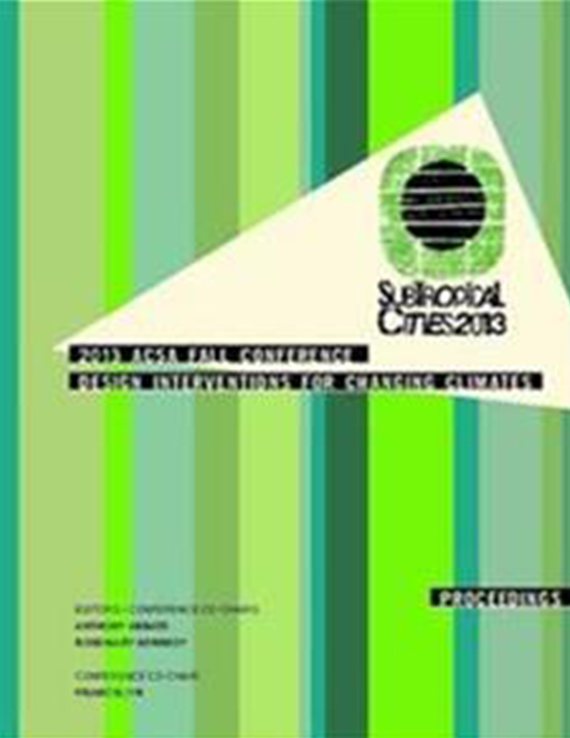Author(s): Nicholas Roberts
This paper describes the joint research and design work conducted by our school of architecture and CEPT University in Ahmedabad, India, on water management, the cultural and religious importance of water, and its aesthetic significance in a hot and arid landscape. The students showed how a public bathhouse could introduce a public space into the center of a city, using natural climate control and localized systems of water harvesting, storage, and treatment. Rationale: In northwest India, growing demand caused by population increase, urbanization, “green revolution” agriculture and rising standards of living are leading to a crisis in water supply and storm water management. Ground water supplies are already limited as a result of pollution and aquifer depletion; large-scale water projects such as the Narmada River dams have severely adverse environmental and social impacts. The increased impermeability of the ground surface resulting from urbanization, coupled with predictions of more infrequent and intense rain events caused by climate change suggest the possibility of more severe flooding.Methodology: This studio drew on traditional practices and emerging techniques of water management to propose localized strategies for harvesting, storage, and treatment, such as gathering grey water from surrounding office buildings, harvesting and filtering rainwater, and using anaerobic digesters and polishing ponds for local waste water treatment. For American students, it was a life-changing experience to see a culture of respect, even reverence, for water. In Ahmedabad, a city of 7.5 million, as in many Indian cities, the municipal water only flows for one or two hours in the morning. Families are used to calibrating their water requirement for the day, and storing it in tanks, buckets and pots. They discovered that to be successful, a design project must take into account the complex web of cultural and religious tradition: gender and class separation, and the religious importance of bathing to both Muslims and Hindus in a society where water is sanctified and the act of bathing is part of the ritual of worship.Building on the work of local architects Balkrishna Doshi and Charles Correa, and Sri Lankan architect Geoffrey Bawa, and using Victor Olgyay’s bioclimatic design approach, the students developed architecture appropriate for the culture and climate. Landscape, water, and space interpenetrate interior and exterior, and buildings appear more as topography and landscape than as freestanding objects. Perforated screens of locally available brick and stone provide enclosure and privacy, while permitting natural ventilation and cooling. Presentation media mirrored the design goals and accommodated the available technology: In addition to systems diagrams and architectural drawings, students used pencil and graphite on large-scale rendered sections to represent the affects of materiality, light and water. Conclusion: The students used their new awareness, and a combination of traditional design strategies and contemporary technology, to show that a public bathhouse in a densely populated area of historic Ahmedabad could be a model for the sustainable use of scarce water resources.
Volume Editors
Anthony Abbate, Francis Lyn & Rosemary Kennedy
ISBN
978-0-935502-90-9

 Study Architecture
Study Architecture  ProPEL
ProPEL 
